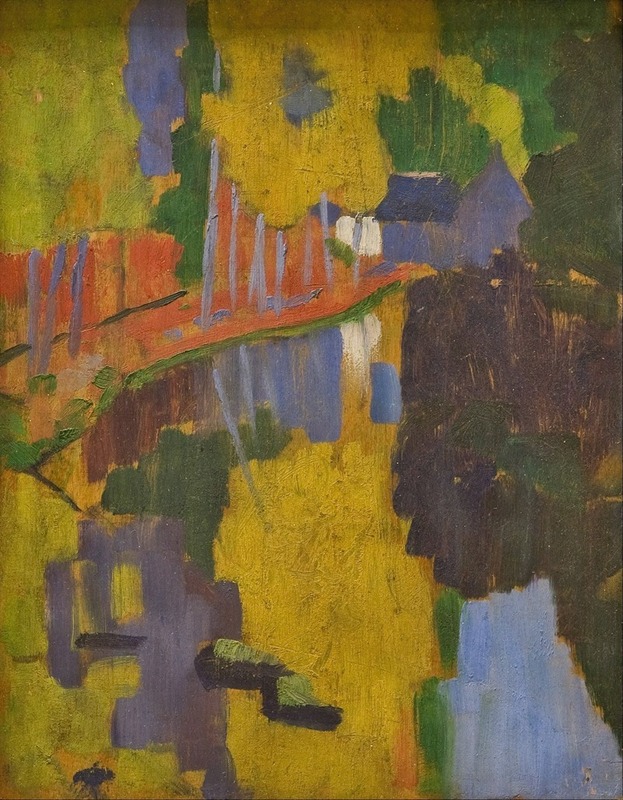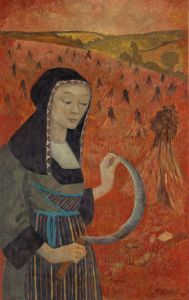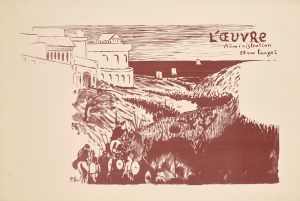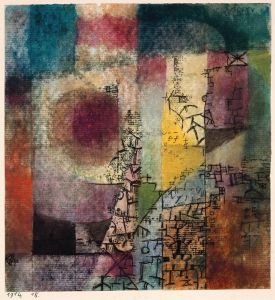
The Talisman
A hand-painted replica of Paul Sérusier’s masterpiece The Talisman, meticulously crafted by professional artists to capture the true essence of the original. Each piece is created with museum-quality canvas and rare mineral pigments, carefully painted by experienced artists with delicate brushstrokes and rich, layered colors to perfectly recreate the texture of the original artwork. Unlike machine-printed reproductions, this hand-painted version brings the painting to life, infused with the artist’s emotions and skill in every stroke. Whether for personal collection or home decoration, it instantly elevates the artistic atmosphere of any space.
The Talisman is a seminal painting created by French artist Paul Sérusier in 1888. This small yet influential work, painted on the lid of a cigar box, is considered a cornerstone of modern art and a key piece in the development of the Nabi movement, a group of post-Impressionist avant-garde artists in France.
The painting was created during Sérusier's visit to Pont-Aven, a small village in Brittany, where he worked under the guidance of Paul Gauguin. Gauguin encouraged Sérusier to move away from naturalistic representation and instead focus on using bold, expressive colors and simplified forms to convey emotion and spirituality. Following Gauguin's advice, Sérusier painted The Talisman as an abstracted landscape, depicting the Bois d'Amour (Wood of Love) in Pont-Aven. The work features vibrant, non-naturalistic colors—such as bright greens, oranges, and blues—and a flattened perspective, emphasizing the painting's decorative and symbolic qualities.
The title "The Talisman" was given to the painting later, reflecting its role as a guiding inspiration for the Nabis. Sérusier brought the work back to Paris, where it became a source of fascination and discussion among his contemporaries, including artists like Pierre Bonnard, Édouard Vuillard, and Maurice Denis. Denis, in particular, praised the painting for its revolutionary approach to color and form, famously describing it as a turning point in the history of modern art.
The Talisman is often credited with encapsulating the Nabis' philosophy, which sought to break away from traditional academic art and embrace a more spiritual and symbolic approach to painting. The Nabis were heavily influenced by Gauguin's ideas, as well as by Japanese prints and the decorative arts, and they aimed to integrate art into everyday life.
Today, The Talisman is housed in the Musée d'Orsay in Paris, where it is celebrated as a landmark in the transition from Impressionism to modern art. Its small size and experimental nature belie its profound impact on the trajectory of 20th-century art, making it a pivotal work in the history of Western painting.

















